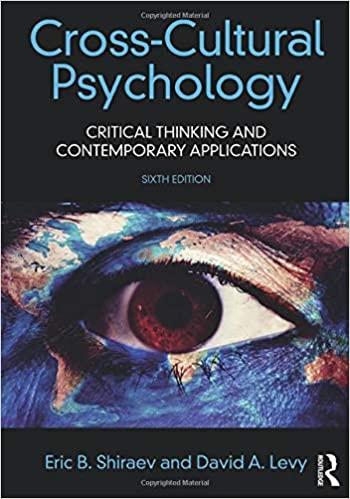Question
Hello Tutors, I need help with answering some research questions about the following article, Using uh and um in spontaneous speaking by Clark, 2002 I
Hello Tutors,
I need help with answering some research questions about the following article,
"Using uh and um in spontaneous speaking" by Clark, 2002
I want to make sure my answers in response to the questions are correct. Please give me feedback if something may need to be changed. Also, I may need some help in condensing my sentences.
Below is Article Link:
https://pdf.sciencedirectassets.com/271061/1-s2.0-S0010027700X01965/1-s2.0-S0010027702000173/main.pdf?X-Amz-Security-Token=IQoJb3JpZ2luX2VjEHsaCXVzLWVhc3QtMSJHMEUCIA8bbkZf%2FnJUjtd%2B4WXjFA2%2FNc48YTE91rlXsbg9a%2FjWAiEAxFJ5PrghuIgCZQsGGoanRzSvpfaw2M9Kdh9nroNkfYgquwUIw%2F%2F%2F%2F%2F%2F%2F%2F%2F%2F%2FARAFGgwwNTkwMDM1NDY4NjUiDEFzZer2PSdwwRspmSqPBbrT8XIWNYfXJduIh1pCd7CX5GA7iNyjk2BOZvHzdO02RLkoWYluRDYfvZFJiTx2pMjrI58uqa%2F3uO6XBmpio%2FX%2FeH%2Bk4jBxI%2BAHyTejvggUGkXv8sUIbkwiRnra74TwzFbKd1kK3O1doaY2cMvH71txJOx8SQWAqgAGpHvgwntUhUw9ZEDwyM54TRp015rtu6ToJa9OOTzhwsaA%2Fqc9y4EkXJm6nuQq2xp%2FqvYDHiWr5rGd5bfT2lHCHtMOkITI7lo3tTpkDAXfrBXyHpb6yOfpJclfJ3TMQ7tUpMP75%2FRnzVIpu401orHf4QhSOSRV5PUYpcatQFfz5xABNgZfPnkXXE7BZ2NSNOCUe%2FPCckM3W59ofL9%2ByfZykHjRwE%2FGAbrfYFX0CWHuek9yZ%2F4DT4%2Fmf%2BwKi6jheAwE5DGk1UB9Jo%2FeqlGj6Bo0rTbM098KR%2FPw1AOlbwjq6VMs49X9Eu2jAkOzG7Y3vwWahqtSMevH8z%2B7452b%2FOsCGZ4xDqK55ABDL7dpXxhwqklndJuY0AoAa6iByKrVDb5N96Os6FhryzaQh%2Bg4UaHwmH5senglA2fCGeYSso4hbt6C6qF3MjlmwXhrX6QeGs7IBi4dxINe7WmnMm3qGxv4JNDzeQtE8WuxJ64eaJFtC5HhoLhrdk4SLKMrgYR%2BAPC%2BZv3l3EvHOUCxq%2FCRgt8cxNLGhaISPro8f8ckr4Ph9vjxO80g7fZK3Sss325gAmEM1ZgF4rWk43H4uXbR68zGklADh%2BDp8h6xQLzXggOs0aH9XCMwngn7PTDhOARWIh6gA6dxhbMOi5dgjpn735LueRFI2D6nfffbIL2HZo8wZACXismxiYyTMweDA%2BTyGjtdM1uWPmAw%2FPrjqgY6sQFv5gOAZGp58LH6C1onrfhRqsNLmchuxqTGX5zl%2BTNVGDC4qpLq4ev6Df19%2BnSe1wOhGIs3a5M2DS18%2B32sB4PE%2F2bGA%2FYZn7WBP0a%2F4odPhRzJ6Y4e6%2BSTgE%2B29wcDvxFbc5VAi3OqPEmzvBbzhdi6a6xQvAtSk4R7FcGLuJvOLUgA0ZVsONQ8URc0eDXB4XHasNVXsbebbpSd6SGYe%2F7rVqoMNKC2pJfj%2F7aqC%2BW5GGo%3D&X-Amz-Algorithm=AWS4-HMAC-SHA256&X-Amz-Date=20231118T193059Z&X-Amz-SignedHeaders=host&X-Amz-Expires=300&X-Amz-Credential=ASIAQ3PHCVTYSKAB2CEZ%2F20231118%2Fus-east-1%2Fs3%2Faws4_request&X-Amz-Signature=5b4b4aef800f6df988a476dd3a512015547049f1b79e10892036dbc0ec569db5&hash=b6f648ab089a59128e6ec1bd7b577a2212e1c586f48178ff9e314e0699cf8cae&host=68042c943591013ac2b2430a89b270f6af2c76d8dfd086a07176afe7c76c2c61&pii=S0010027702000173&tid=spdf-d231e8b6-fde3-4963-a280-441089645d89&sid=08c7d83318966740c7396a13f2d4e0d4d606gxrqa&type=client&tsoh=d3d3LnNjaWVuY2VkaXJlY3QuY29t&ua=0f155e55565d03505a5305&rr=8282a192dd00425e&cc=us
The following questions are: They must only be one sentence long
1. What was the researchers question (hypothesis)?
2. What was the researchers answer or methods taken to answer the hypothesis?
3. What was the researchers rationale - the connection between the authors question and their methods?
4. What was the researchers findings (results) from the study?
5. What was the researchers interpretation of the study based on the results?
My answers to the questions: They must only be one sentence.
1. The author's question was to examine speakers using filler words such as "uh" and "um" to signal that they are about to pause briefly before continuing their speech, with "uh" indicating a minor delay and "um" indicating a more significant one.
2. The author's answer to the question was through data collected from 50 in-person conversations held both in groups of two and six, and these transcripts include various linguistic elements like complete words, word fragments, fillers, pauses, tone units, overlapping speech, and intonation patterns such as rising, flat, and falling intonation.
3. The author's rationale to better understand communication, it is helpful to distinguish between two channels of information exchange. The first channel pertains to the official business or topics of discussion, while the second channel involves the nonverbal aspects of the interaction, such as timing, rephrasing, mistakes, repairs, and the speaker's intentions.
4. The author's findings show speakers to keep track of their upcoming speech plans and be aware of any delays that may require comment. When a delay is identified, they must decide where and how to pause their speech and whether to use filler words like "uh" or "um," as well as whether to attach them to the previous word and how long to prolong them.
5. The author's interpretation suggests the use of "uh" and "um" in speech is a common practice, and that speakers deliberately incorporate them into their language production process as they would with any other word.
Step by Step Solution
There are 3 Steps involved in it
Step: 1

Get Instant Access to Expert-Tailored Solutions
See step-by-step solutions with expert insights and AI powered tools for academic success
Step: 2

Step: 3

Ace Your Homework with AI
Get the answers you need in no time with our AI-driven, step-by-step assistance
Get Started


